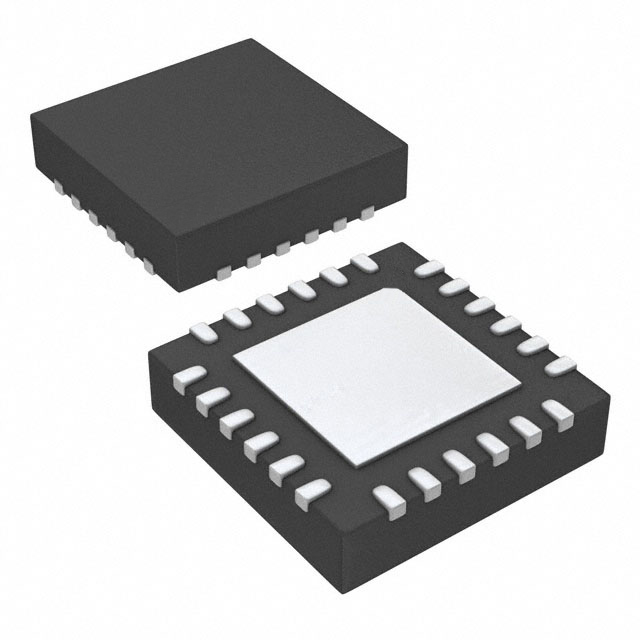5P49V5901B620NLGI8
Basic Information Overview
- Category: Electronic Component
- Use: Clock Generator and Jitter Attenuator
- Characteristics: High precision, low jitter, programmable output frequencies
- Package: QFN (Quad Flat No-leads)
- Essence: Integrated circuit for clock generation and jitter attenuation
- Packaging/Quantity: Tape and reel, 2500 units per reel
Specifications and Parameters
- Input Voltage Range: 2.375V to 3.63V
- Output Frequency Range: 8kHz to 2.7GHz
- RMS Phase Jitter: <0.5ps (typical)
- Supply Current: 100mA (typical)
- Operating Temperature Range: -40°C to +85°C
Detailed and Complete Pin Configuration
The 5P49V5901B620NLGI8 has the following pin configuration:
- VDDO: Power supply voltage output
- GND: Ground
- XIN: Crystal oscillator input
- XOUT: Crystal oscillator output
- VDDI: Power supply voltage input
- SDA: I2C serial data input/output
- SCL: I2C serial clock input
- NC: No connection
- OE: Output enable
- OUT0: Programmable output frequency 0
- OUT1: Programmable output frequency 1
- OUT2: Programmable output frequency 2
- OUT3: Programmable output frequency 3
- OUT4: Programmable output frequency 4
- OUT5: Programmable output frequency 5
- OUT6: Programmable output frequency 6
- OUT7: Programmable output frequency 7
- VDDO: Power supply voltage output
- GND: Ground
Functional Characteristics
- Clock generation with low jitter
- Programmable output frequencies
- I2C interface for configuration and control
- Spread Spectrum Clocking (SSC) support
- Output enable/disable control
- Crystal oscillator input
Advantages and Disadvantages
Advantages: - High precision clock generation - Low phase jitter for improved signal quality - Flexible programmable output frequencies - Support for spread spectrum clocking
Disadvantages: - Requires external crystal oscillator - Limited number of programmable output frequencies
Applicable Range of Products
The 5P49V5901B620NLGI8 is suitable for various applications, including: - Networking equipment - Telecommunications systems - Data centers - Industrial automation - Consumer electronics
Working Principles
The 5P49V5901B620NLGI8 generates clock signals by utilizing a crystal oscillator as the reference. It then attenuates jitter in the generated clock signals to ensure high-quality timing. The device allows for flexible programming of output frequencies, enabling it to meet the requirements of different applications.
Detailed Application Field Plans
The 5P49V5901B620NLGI8 can be used in various fields, such as: 1. Network switches: Provides precise clock synchronization for reliable data transmission. 2. Wireless communication systems: Ensures accurate timing for seamless connectivity. 3. Server farms: Maintains synchronized clocks for efficient data processing. 4. Test and measurement equipment: Delivers stable and precise timing signals for accurate measurements. 5. Audio/video equipment: Enables synchronized audio and video playback.
Detailed Alternative Models
Some alternative models to the 5P49V5901B620NLGI8 include: - 5P49V5901B620NLGI7 - 5P49V5901B620NLGI9 - 5P49V5901B620NLGI10
5 Common Technical Questions and Answers
Q: What is the maximum output frequency of the 5P49V5901B620NLGI8? A: The maximum output frequency is 2.7GHz.
Q: Can I program the output frequencies using an external microcontroller? A: Yes, the device supports programming via the I2C interface, allowing external control.
Q: Does the 5P49V5901B620NLGI8 support spread spectrum clocking? A: Yes, it has built-in support for spread spectrum clocking.
Q: What is the typical phase jitter of the device? A: The typical phase jitter is less than 0.5ps.
Q: Is the 5P49V5901B620NLGI8 suitable for automotive applications? A: No, this device is not designed for automotive use.
This encyclopedia entry provides an overview of the 5P49V5901B620NLGI8, including its basic information


